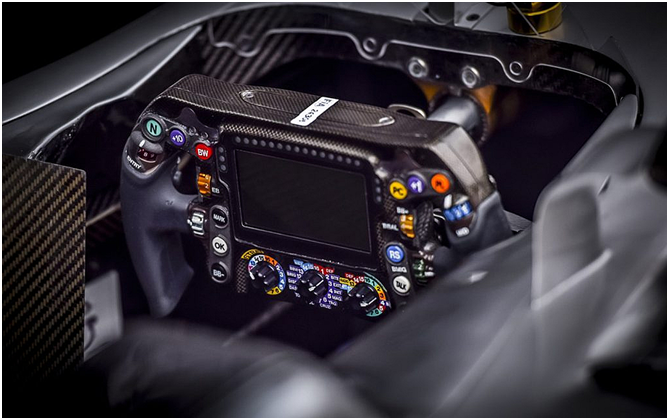Formula 1 (F1) car steering wheels are highly sophisticated and complex pieces of technology. They are designed to provide drivers with a wealth of information and control options during a race. To give you an idea of their complexity, let’s delve into some statistics and explore the various elements that make up a Formula 1 steering wheel. At this moment you can boost your wins: 1xBet bonus offers are available for wagering on all kinds of Formula 1 events too.
Formula 1 steering wheels are equipped with an extensive array of buttons and switches, which can vary from team to team and even from race to race. On average, a Formula 1 steering wheel can have between 20 to 30 buttons and switches. These controls allow the driver to make real-time adjustments to the car’s settings. There are 3 examples of those settings that can be mentioned, which are:
- fuel mixture;
- brake bias;
- and differential settings.
Steering wheels are fitted with multiple LCD display screens, typically 2 to 3 screens. These screens provide crucial information to the driver, including data on tire pressures, lap times, engine RPM, and fuel levels. Some teams may even incorporate touchscreen technology for easier navigation. The 1xBet bonus offers always allow you to boost your wins when wagering on the most important Formula 1 events too.
Additionally, rotary dials are used for adjusting various settings, such as traction control, engine mapping, and differential settings. A typical Formula 1 steering wheel may have 4 to 6 rotary dials.
While modern Formula 1 cars use semi-automatic transmissions, they still have clutch paddles on the steering wheel. These paddles are used for clutch engagement during race starts and pit stops.
Formula 1 steering wheels feature 2 paddle shifters for gear changes. These paddles are located behind the wheel, with one paddle for upshifting and another for downshifting. Some wheels may also have a “clutch bite point” paddle for precise clutch control.
Multi-function buttons allow the driver to access different menus and settings on the steering wheel’s display screens. These buttons are often labeled with icons or abbreviations to help the driver quickly identify their functions.
Controlling all kinds of aspects of the cars
Engine Modes: Formula 1 steering wheels have buttons for selecting different engine modes, such as “overtake” or “fuel-saving” modes. These modes can have a significant impact on the car’s performance during a race. You can always make smart betting, bigger rewards: 1xBet promotions also cover the exciting world of Formula 1 as well.
Also, there are buttons for communicating with the pit crew. Drivers can use these buttons to relay important information or receive instructions from their team. Furthermore, Formula 1 steering wheels allow for real-time brake balance adjustments. Drivers can fine-tune the front-to-rear brake bias to optimize braking performance.
The steering wheel is also used for data logging and telemetry purposes. It allows the car’s onboard computer to collect and transmit data to the team’s engineers, who can then analyze it to make strategic decisions during the race.
Formula 1 steering wheels feature a quick-release mechanism that allows for rapid removal and installation. This is crucial for quick pit stops and driver changes.
The weight of a Formula 1 steering wheel typically ranges from 1.5 to 2.5 kilograms (3.3 to 5.5 pounds), depending on the materials used and the specific design.
It is also worth noting that the cost of an Formula 1 steering wheel can be quite high, with some estimates ranging from $50,000 to $100,000 or even more. This depends on the team and technology involved. Those staggering numbers show how complex pieces of technology these steering wheels are rather than purely directional controls. The 1xBet promotions allow you to make smart betting and get bigger rewards, and here you can wager on all kinds of occurrences that happen in Formula 1.

